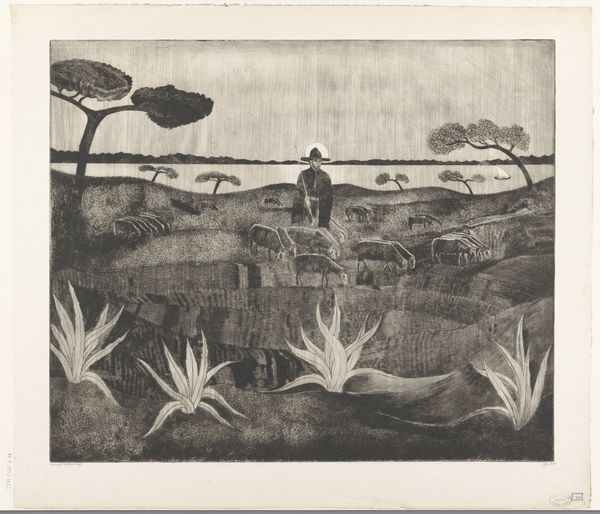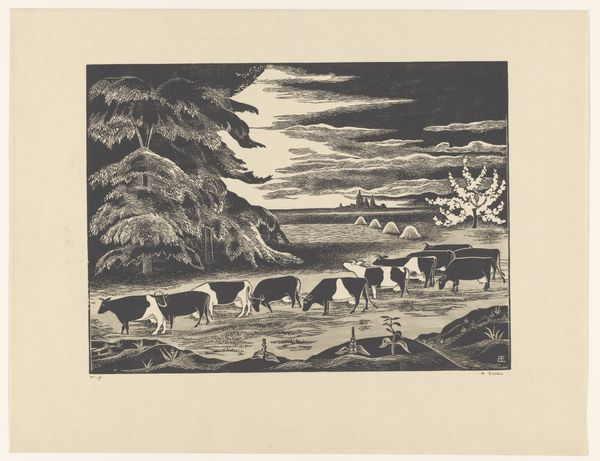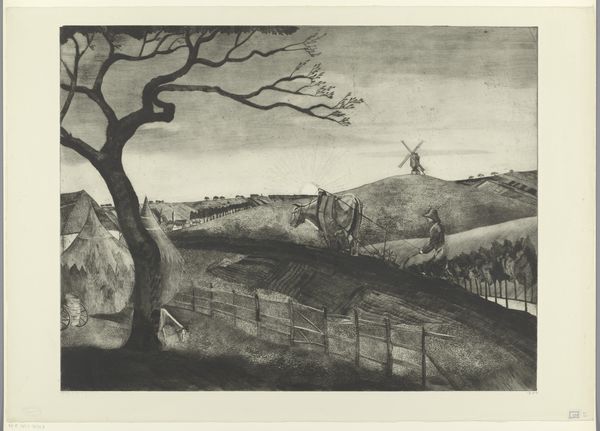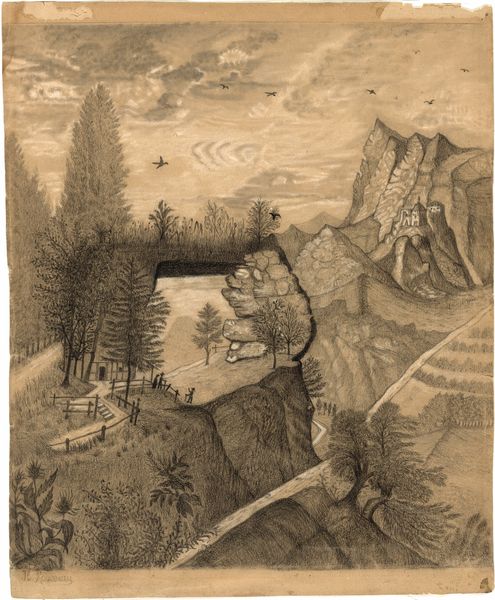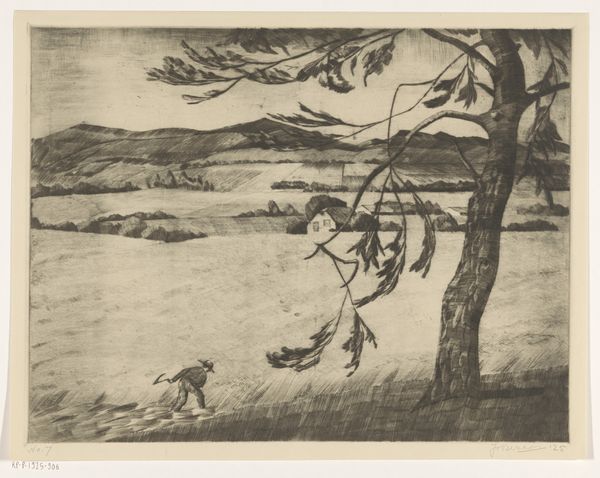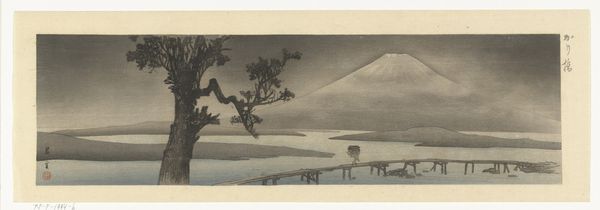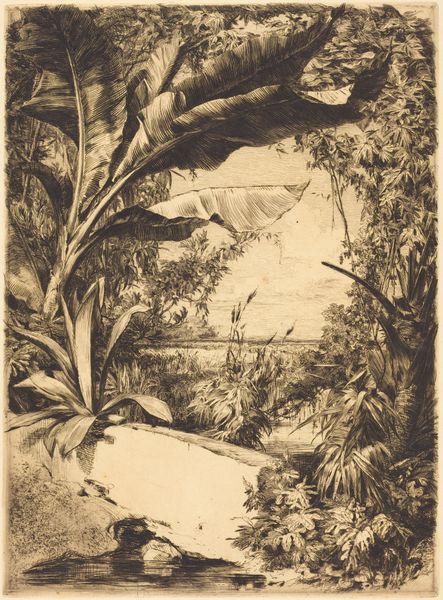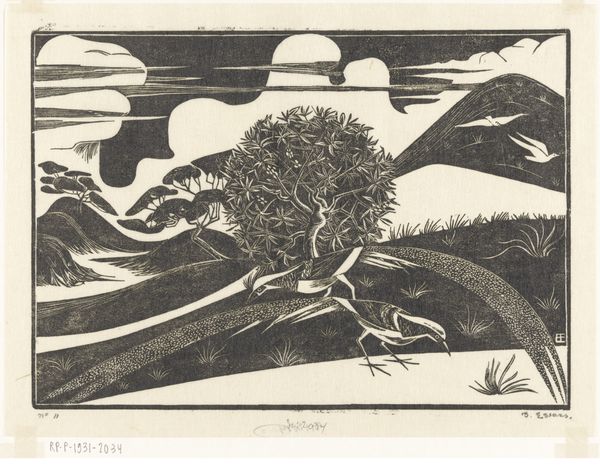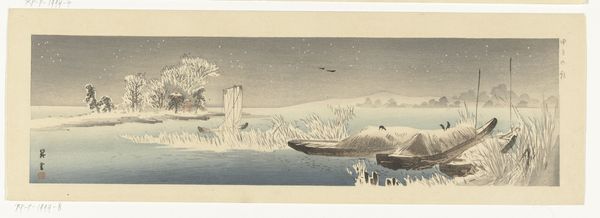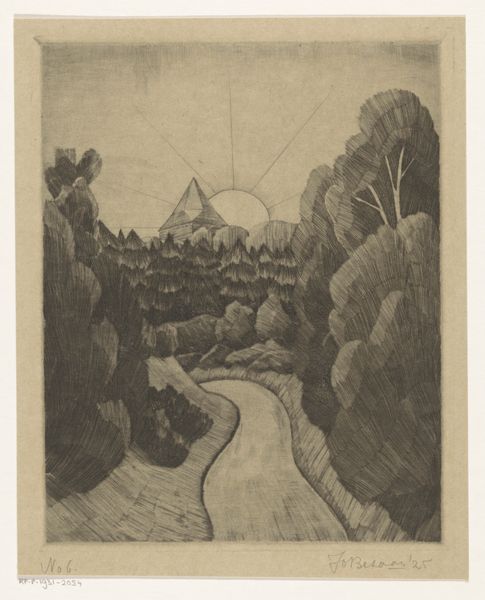
drawing, pencil
#
drawing
#
pencil sketch
#
landscape
#
pencil drawing
#
pencil
#
surrealism
#
cityscape
#
surrealism
Dimensions: height 490 mm, width 640 mm
Copyright: Rijks Museum: Open Domain
Editor: So this is Lodewijk Schelfhout's "Boogbrug op Corsica," made in 1922 using pencil. It’s at the Rijksmuseum. I'm really struck by the sort of dreamlike quality; it feels both familiar and distant. What symbols do you think Schelfhout might be using here? Curator: Well, the bridge itself is a potent symbol, isn’t it? Connecting two sides, transition. The arched form recalls a portal, framing a vision of the world beyond. Do you notice how the artist places the boat precisely in that framed view? Editor: I do now! Almost as if passing through a gate. And there’s the figure seated atop the bridge; a solitary, contemplative observer. What is the relationship between the boat and the figure above? Curator: It makes you wonder about their relationship to this Corsican landscape, doesn't it? Are they connected or isolated? Consider the cultural context. In the early 20th century, there was a fascination with island cultures and a romantic vision of the Mediterranean. Schelfhout plays with this romanticism but subverts it through this dreamlike style. Also consider the sharp, imposing agave plants in the foreground; they contrast the calm stillness of the heron. Editor: It's a subtle dissonance that gives the work its peculiar power. So it’s not just a pretty landscape, it’s layered with ideas of connection and disconnection, romanticism and… something sharper, maybe a touch of the uncanny? Curator: Precisely. He gives us Corsica, but filtered through a symbolic lens. He's not just recording what he sees but also exploring what he *feels* about it. It shows the lasting allure of the island as a space for both refuge and contemplation. Editor: It is truly interesting to see the many symbols coexisting in one space. I will surely think of it in that way from now on. Curator: Likewise. Hopefully, the power of symbols never fades away from cultural memory.
Comments
No comments
Be the first to comment and join the conversation on the ultimate creative platform.

